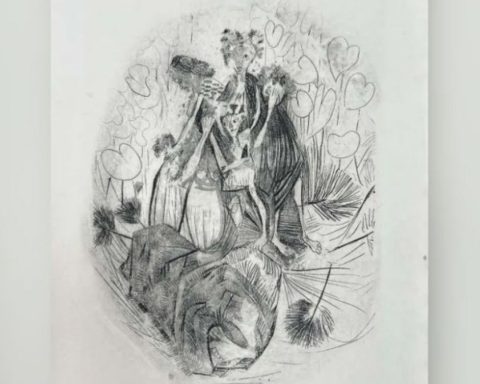D.
the stories serve Sarah Chaney in her latest book, Am I Normal?, to tell us the story of the normal. Both occurred in the United States. In 1942, a sexologist and a sculptor –Dickinson and Belskie– made the figures of the Americans average
who were called Norma and Norman. Whites, provided
and healthy, their measurements arose from the statistical data collected, added, divided, by both among their acquaintances and acquaintances. But, when in 1945 a newspaper called a contest to find out who had the proportions of Norma, out of more than 4,000 attendees, no one, not even a real woman, had them. The prize went to the person who came closest, Martha Skidmore, who sees herself without a waist and with sloping shoulders compared to the ideal, the sculpture.
The other story is that of Middletown, a small town in Indiana, Muncie, which two anthropologists, Helen and Robert Lynd, wanted to name as the typical
in 1924. For them, the usual was a kind of average. The problem was the same as with the sculptures: the description in his anthropological study was confused with a judgment and, after a period of its publication, as a must. From Muncie, the Lynds excluded nearly 10 percent of their population that was African-American. Nor did they mention in their study that the city hall was controlled by the Ku Klux Klan, which used the boy scout against Catholic temples and synagogues. They also ignored the women who supported their homes. Thus the Lynds created another ideal, a typical
American people who did not conform to Muncie’s reality, but to his own aspiration: the small-town white middle class, with a family in which the man supports the wife, who is dedicated to the home, and whose life happens without the scares of racism. The problem is that Middletown was as real as The Flintstones.
The ideal was built by a reading public desperate due to the crisis of 1929, the year the study was published, and who needed something to aspire to or, failing that, to simulate. He did not care for the reality that, in the real Muncie, 72 percent of its inhabitants were laborers and farmers.
Reading Chaney’s book got me thinking about the middle class, not as a matter of income, but as that ideal imposed to justify social, racial, and moral judgments on others and ourselves, and that serve to make us conform to their standards. obediences. It normal
like the usual, habitual, persistent, it is like sculpture or treatise: they serve to condemn and exclude more than to describe and understand. Since the 19th century, white, conservative professionals have been chosen as the standard and guardians of what is normal
, although they are always a minority. It medium
of this middle class is not that it is between rich and poor, illiterate and graduates, but that it is a category that emerges from excluding what, from the outset, does not seem normal to its creators. Chaney gives the example of the first survey of leaders
Made in 1936 at Harvard. All were white heterosexual males with incomes 15 times the national average. Still, Harvard named them the standard of what normal
, more as an aspiration of the rest than as a useful description of the elite they made up. Among them was an elite young man named John F. Kennedy. Chaney notes with some derision the fact that the Kennedys have been political leaders in the midst of the outbreak of the abnormal
: antipsychiatry, civil rights, movement Black Panther, the strike of Mexican workers in California led by César Chávez, the feminist demands, and the beginning of those of sexual diversity. What the Harvard scholars meant by normal
not an average, but a balance of attributes whose combination allows them to function effectively in a variety of ways
. It was another way of imposing a standard of privilege and all its favorable conditions on the excluded. It is in this sense that a part of the Kennedy myth is forged, which, in the end, spreads already purged of his perks and advantages from the cradle to turn him into a professional, family man, gripped by radicals on both political extremes.
It normal
it has been, from the beginning, associated with economic and political power. It has served to conform societies to its image while it assures us that this image is society itself. In his custody, he condemned the women to rest and marriage
when he branded them as hysterical, the gays to be denounced by their neighbors, the fat, too tall, or too dark to wear sizes that did not fit them or skin whiteners, hair straighteners, dyes. But Chaney begins his text by explaining this initial confusion between a mathematical equation and cultural judgment. It turns out that what we now know as Gaussian curve
It was the equation to know where the star that an astronomer, Giuseppe Piazzi, was going to appear, named Ceres. The curve is the distribution of errors at the apex of which the star is most likely to appear. But at the time of bringing an astronomical location to the human sphere, this confusion arose between normal
, average
Y Right
. Once again we had moralized a technique. Humans not at the top of the distribution curve were all errors. Neither Martha Skidmore, nor the people of Muncie, nor even Kennedy, achieved the ideal.
You may wonder why I wrote about this today. My answer is simple, though perhaps insufficient: it was on a New Year in 1801 that Ceres passed between Mars and Jupiter. Neither she nor Piazzi nor Gauss were to blame for what the transit of a star in the sky has made us obey.
















